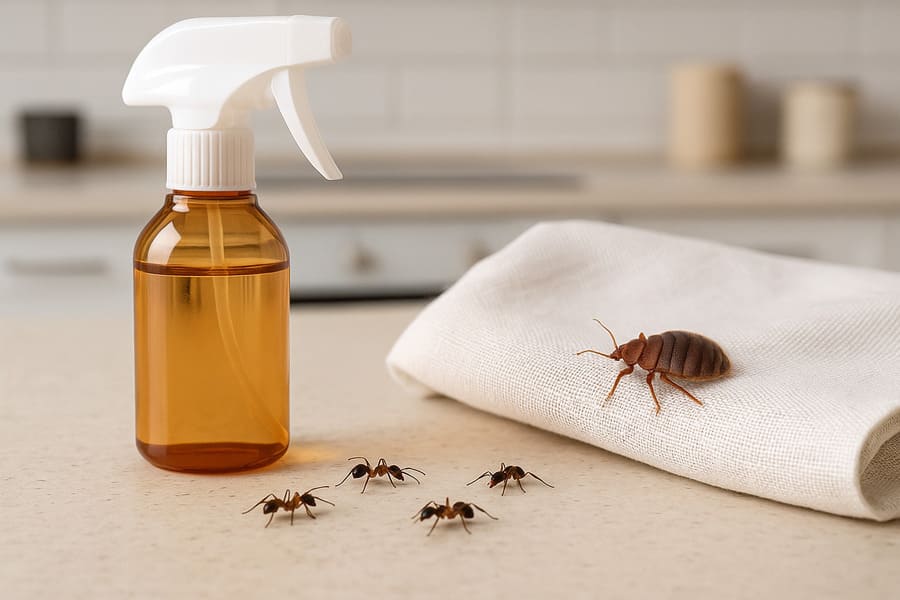Let’s get real. There is nothing that will ruin your morning faster than rolling out of bed to a line of ants parading around your kitchen counter, or rolling out of bed to a dubious bite and wondering if you slept through some kind of bug rave last night.
We have all been there: digging through a drawer for a can of half-rocket fuel and half-hospital corridor-smelling chemical spray. Do we need to fumigate our homes just to get rid of some bugs, then?
Why Bother Going Natural
Yes, they do work. But let’s talk trade-offs. You’re spraying pesticide all over in the air you breathe, floors your kids crawl on, and hoping your fur babies don’t lick the border you just sprayed. And don’t even get me started about the ingredient list that resembles a chemistry book and not something you invite into your home.
More and more people are choosing natural repellent not because they’re closet greenies, but because it just makes more sense. It’s the fast food version of “no drive-thru thanks” and reverting to preparing food in one’s own kitchen: less shady add-ins, much greater choice.
And the good news at last plants have repelled insects for ages, ages past, long before we learned to spell the word “insecticide.” The same oils of the essences we use in a desperate bid to silence a headache or wipe down the kitchen counter can also bid adieu to bugs. Let’s explore ten ways that you can harness nature’s own defense to reclaim your space.
1. Bed Bug Blend: A Natural Sleeping Repellent
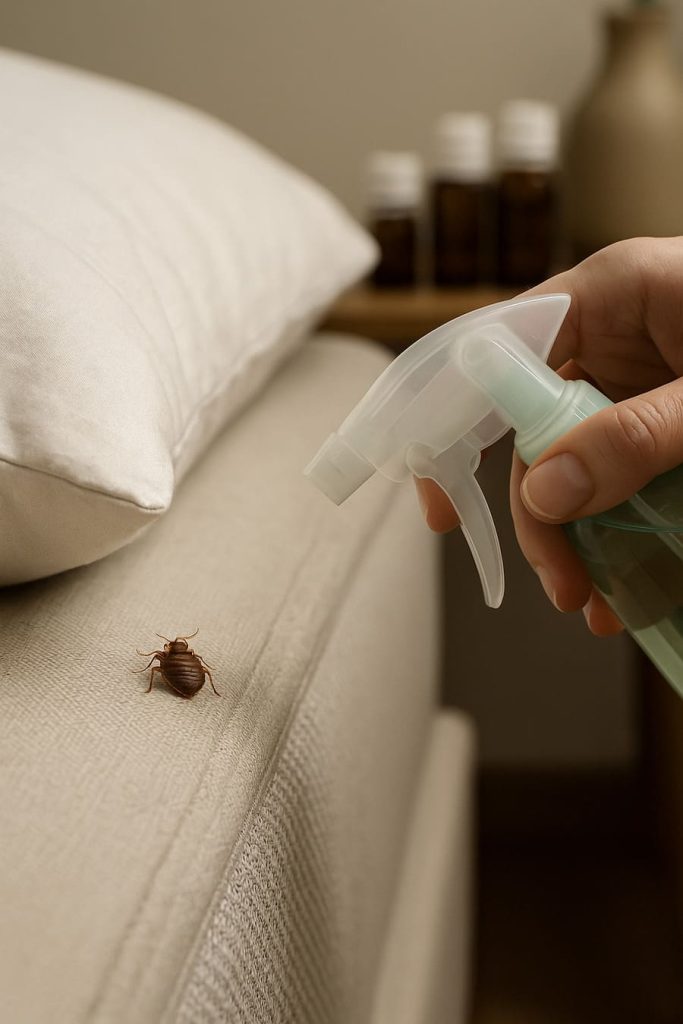
Picture this: you’re in bed, blissfully unaware, as tiny unwanted visitors dine on your ankles. Bed bugs are unwelcome specters that feed by biting. But a mixture of essential oils picture cinnamon, clove, peppermint can be your bed’s worst nightmare.
You’ll need:
- Peppermint,
- cinnamon,
- clove,
- eucalyptus,
- lavender,
- thyme ,
- tea tree oil.
Why It Works:
These oils disrupt bed bugs’ nervous systems, gently warding them off without making your bedroom a chem zone
How to Make It:
Blend a few drops of each oil with water or a light carrier oil like almond. Fill a spray bottle.
How to Use It:
Spray bed seams, mattress frames, and bed linens 2–3 times a week.
Fun Fact
Cinnamon oil is perhaps that cozy winter candle fragrance to us, but to bed bugs, it’s a bottle of brimstone.
2. Ant Repellent: Give the Freeloaders the Boot
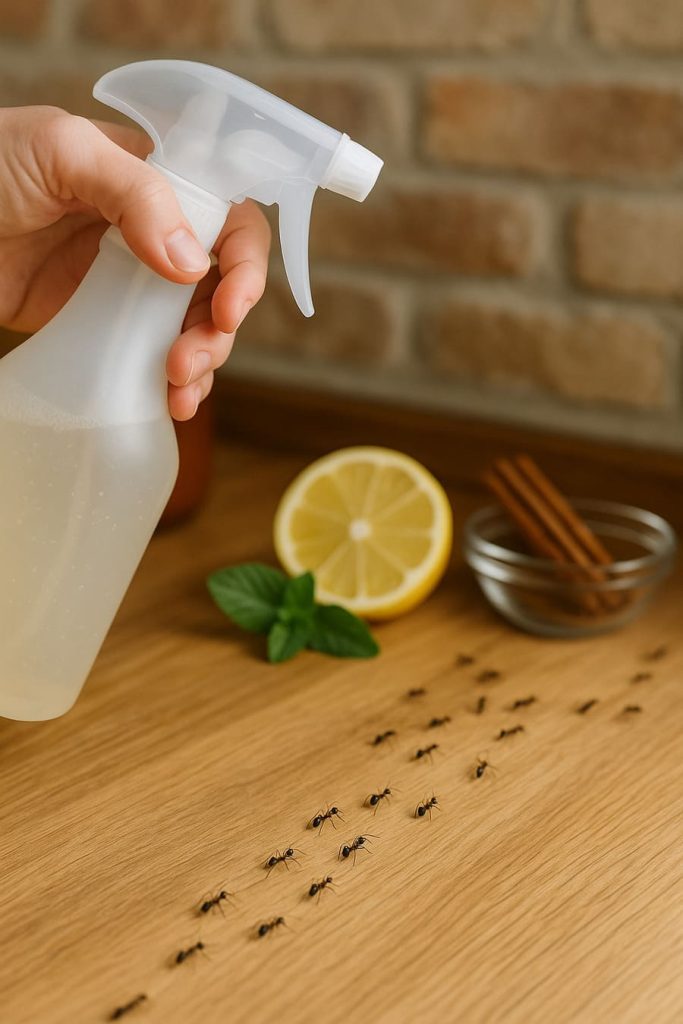
Ants are just such obnoxious neighbors who just show up the minute they get a whiff of food. That lone crumb on the floor of your kitchen is all the invitation they require, but you can interrupt their pheromone trails with some well-placed sprays.
What You Will Need:
- Black pepper,
- cinnamon,
- citrus oil,
- clove,
- peppermint,
- spearmint,
- tea tree oil
Why It Works:
These smells disrupt the chemical messages ants use when walking from point A to point B. Without their tags, they become disoriented and quit.
How to Make It:
Combine oil and water or white vinegar in a spray bottle.
Spray doors, baseboards, and other hot spots where ants gather.
Ants deposit pheromone trails. Play havoc with them, and it’s like erasing their GPS.
3. Spider Spray: Run the Eight-Legged Ones Out
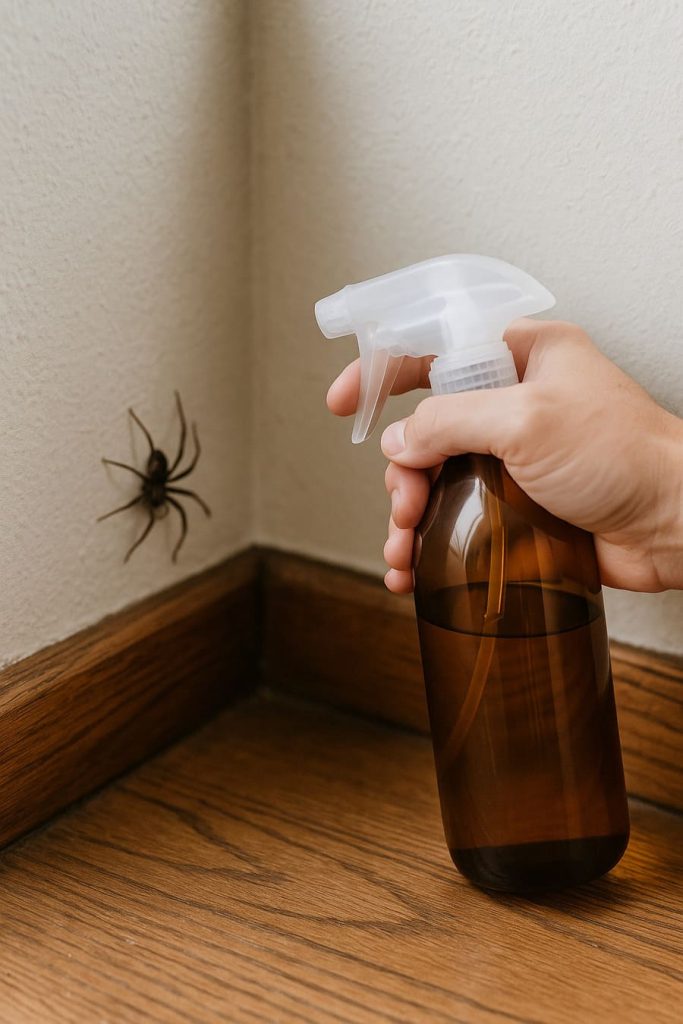
Sure, spiders eat other bugs. That’s great. But most people would prefer they do it somewhere else. Spiders hate strong scents, so essential oils can make your home feel like a war zone, at least from their perspective.
What You Will Need:
- Cedar wood,
- citronella,
- clove,
- lavender,
- lemon,
- orange,
- peppermint,
- spearmint.
Why It Works:
These oils make spiders’ sensory organs irritable, so they back away quickly.
How to Mix It:
Few drops of each oil in water, add a splash of witch hazel so it will adhere to surfaces.
How to Use It:
Spray window moldings, room corners, furniture backs, and basement edges.
Cool Insight:
Spiders “taste” and smell chemicals with their legs. Trampling on your oil spray is tramping through a cloud of perfume they didn’t order.
4. Fly Deterrent: Bye-Bye Buzz
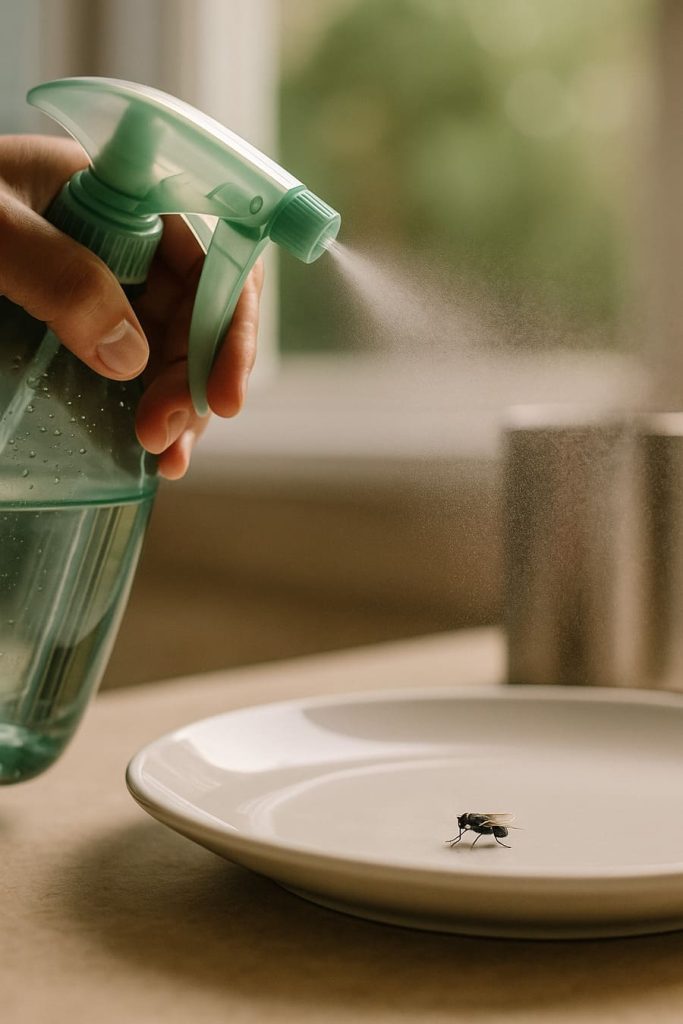
Flies are like your noisy, rowdy house guest who just can’t seem to leave alone your food and pick up on social hints. But their own sense of smell is their downfall.
Ingredients:
- Cedar wood,
- lavender,
- lemongrass,
- orange,
- patchouli,
- peppermint,
- rosemary,
- spearmint,
- tea tree.
Why It Works:
These strong smells keep flies away upon contact and deter them from staying around.
How to Mix It:
Mix 8–10 drops of each oil into a bottle of distilled water and shake vigorously.
How to Use:
Spray around trash cans, windowsills, and dinner plates.
Neat Fact:
Patchouli jams a fly’s navigation system. Not just for incense smart.
5. Mosquito Repellent: Save Your Summer Nights
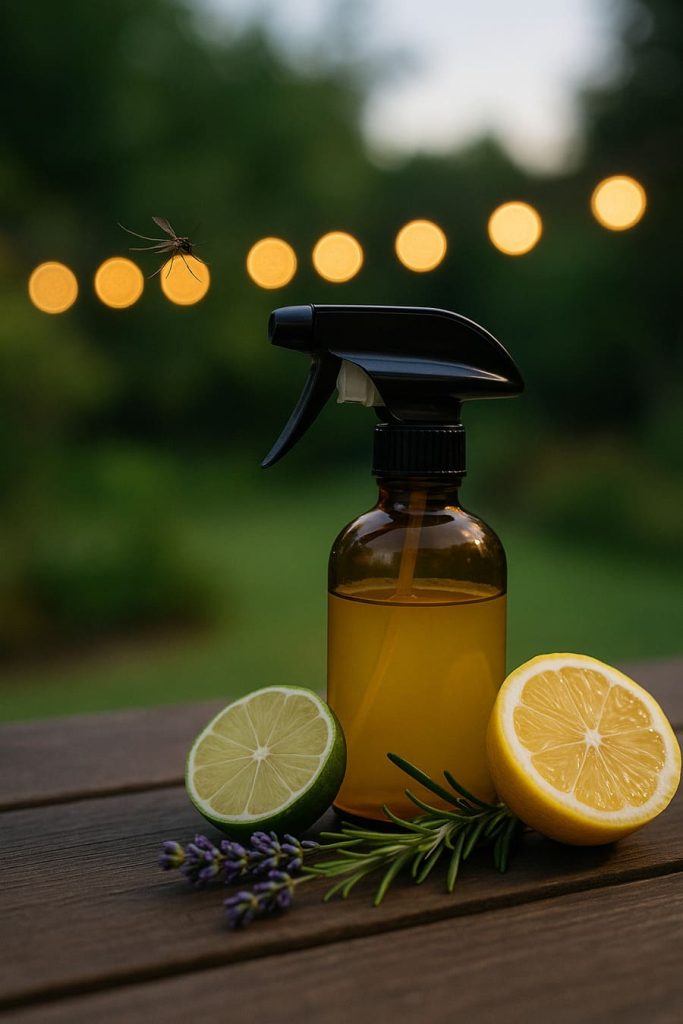
Mosquitoes are more than a nuisance, they’re killers. Natural oils give us a margin of keeping them at bay, however, without immersing ourselves in test tube-raised repellents.
Ingredients:
- Cedar wood,
- cinnamon,
- citronella,
- clove,
- eucalyptus,
- geranium,
- hyssop,
- lavender,
- lemon.
Why It Works:
This mix deconfoils human scent detection by mosquitoes and conceals the CO₂ they track.
Preparation:
Thin oils with distilled water or aloe vera gel to solution skin-friendly.
Application:
Spray directly on bare skin and patios, especially at nightfall.
Metaphor Moment:
Citronella’s not a repellent, it’s your sneaky mosquito bouncer.
6. Wasp Deterrent: Show Them the Exit (Nicely)

Wasp are the cranky bug cousins, fast, angry, and explosive. You don’t necessarily have to kill them, you just don’t want to invite them in to test your porch.
What You Will Need:
- Black pepper,
- cinnamon,
- clove,
- geranium,
- lemongrass,
- peppermint.
Why It Works:
The scent blend repels wasps and directs nest placement in the area.
Preparation:
Combine oils and several drops of dish soap with water in a spray bottle.
Use With Caution:
Spray in eaves, patio corners, and near areas where wasps are known to be, but always from a safe distance.
7. Flea Spray: Because Your Pet Deserves a Peaceful Nap
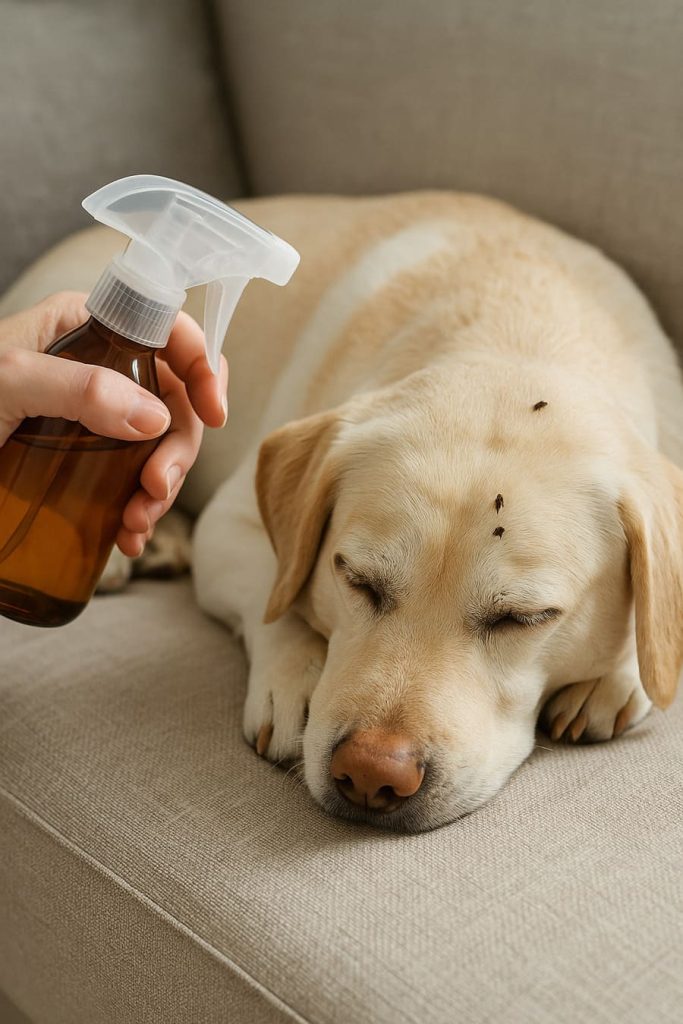
Ever seen your dog scratching nonstop or found weird bites around your ankles? That’s flea drama, and it escalates fast. This spray keeps them from turning your carpets and pets into their personal resort.
You’ll need:
- Cedar wood,
- citronella,
- eucalyptus,
- lavender,
- lemongrass,
- peppermint,
- orange.
Why It Works:
These oils break up flea cycles and make pet bedding and soft surfaces unpalatable to them.
How to Make It:
Mix an equal amount of water and white vinegar and add in the essential oils. Fill a spray bottle.
How to Use:
Lightly spray rugs, furniture, and pet beds (following a sensitivity test). Allow it to dry before pets will lie down once more.
8. Lice Repellent: Save Little Heads

The schoolyard parasite. One kid catches lice, and they’re all scratching their heads like lunatics. But wait a minute and don’t rush off for the poison treatments just yet. Use a preventative instead.
Cedar wood, eucalyptus, geranium for their earthy strength, lavender, lemon, orange, patchouli, peppermint, rosemary, spearmint and tea tree
Why It Helps:
Lice don’t like foul odors and will not infest hair that carries some oils.
How to Mix It:
Dilute your selection oils in a carrier oil (coconut) or mix with water for leave-in spray.
How to Use:
Use sparingly on scalp, or spray hats, combs, and collars before school or day care.
9. Multi-Bug Barrier: The All-Purpose Shield
It ain’t one bug, it’s an entourage. Roaches, flies, spiders, call it poison. A general barrier spray has your back with half the effort.
Ingredients:
- Peppermint,
- citronella,
- eucalyptus,
- tea tree.
Why It Works:
These immobilize single insect nervous systems and break down into their point of entry.
How to Make It:
Mix with rubbing alcohol or vinegar in a spray bottle and shake violently.
Where to Use It:
Spray onto door and window sills, baseboards, and even cracks in walls and floors.
10. Citrus and Herb Sachets: The Passive Protector
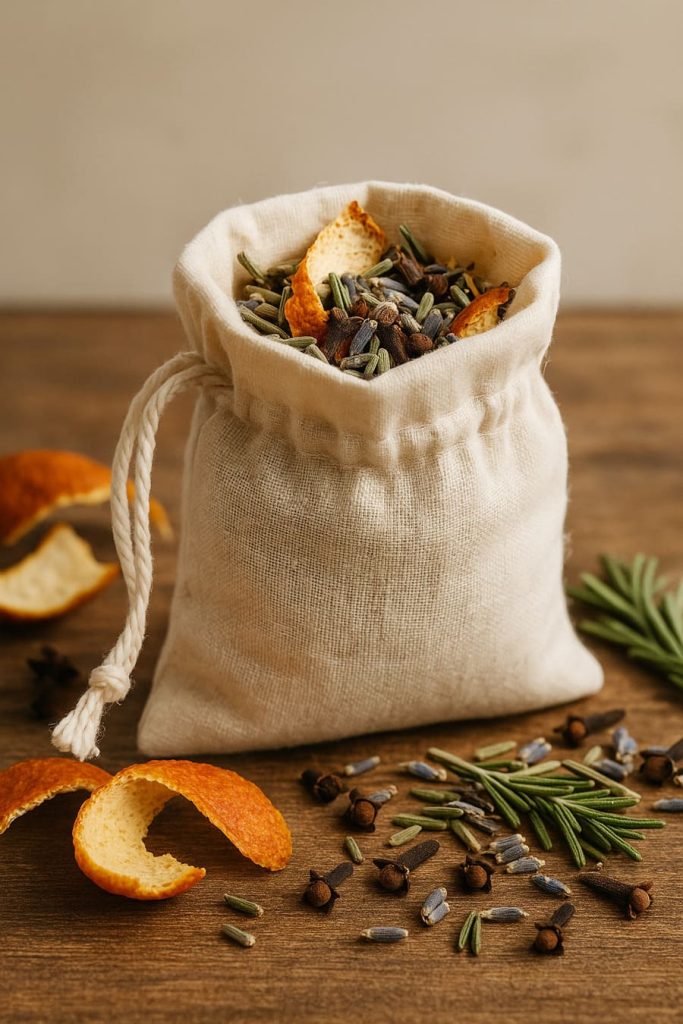
Not all repellents have to be sprayed. These low-effort, high-impact sachets quietly keep bugs at bay while making your home smell amazing.
You’ll need:
- Dried lemon/orange peel,
- lavender,
- rosemary,
- whole cloves.
Why It Works:
These herbs and peels emit compounds that deter insects like moths, silverfish, and even roaches.
How to Make Them:
Fill small cotton or muslin pouches with your dried ingredients.
Where to Use Them:
Pack them into closets, drawers, under the beds or cabinets where insects are delighted to crawl in.
Conclusion:
Nature’s Been on Your Side This Whole Time
Natural simply isn’t swanky or hippie. It’s being a smart shopper that keeps your pet healthy, your home healthy, and your head clear. You don’t need to blow your house up with toxic sprays to be pest-free.
With some oils, pantry staples, and a touch of DIY magic, you can turn your home into a haven that’s (and scented) clean, safe, and inviting. And isn’t that the concept?
The next time there’s buzzing, a trail, or a sting, breathe easy. Just take out nature’s tool box and shoo away those annoying bugs, the tidy and smart way.
